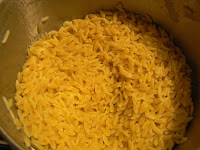I always thought John Kerry got a raw deal. It wasn’t just because I was supporting him in the 2004 Presidential race. It was because when he was accused of “flip-flopping,” he really wasn’t, and because flip-flopping is not necessarily a bad thing.
As
CNN reported at the time: Sen. John Kerry…gave an explanation for his comment that he “actually did vote for the $87 billion before I voted against it," calling it "one of those inarticulate moments." Kerry made the comment … in response to a question about his vote against an $87 billion supplemental appropriation for military operations in Iraq and Afghanistan. He tried to explain that he had voted for an earlier version of the bill before opposing final passage.
His explanation was too nuanced for the political atmosphere of the time. He was branded, and the rest, sadly, is history.
In the last couple of weeks, I’ve noticed that for flip-flopping, IOKIYAR (It’s OK if you’re a Republican). Sen. Scott Brown of Massachusetts has been all over the map about his support, or not, of the House budget which includes dismantling Medicare. I’ll give him the benefit of the doubt – we all have “inarticulate moments.”
I won’t do the same for Newt Gingrich, who has demonstrated the CLASSIC flip-flop. First, he calls the House budget “right-wing social engineering” in a rare bout of truth-telling. Then he gets reamed by the party for stepping out of line and makes all kinds of lame excuses. Finally, he commands everyone not to look at the man behind the curtain: “I want to make sure every House Republican is protected from some kind of dishonest Democratic ad. So let me say on the record, any ad which quotes what I said on Sunday is a falsehood.” Best line since Nixon’s press secretary called his previous statements “inoperative.”
Flip flopping really isn’t a bad thing, anyway. If you change your opinion when you get new data, then you’re being smart and savvy. Kind of like my opinion of beets.
All my life I just KNEW I hated beets. I wouldn’t even try them. Then about a year ago I got some beautiful organic beets in my selection from
Manna Market. I was really into roasting at the time so into the oven they went. Peel, slice, put a little olive oil and wow! They were really good. Earthy and sweet and all of a sudden I was hooked on beets. If I ever run for office, I hope they don’t use that flip-flop against me.
This last selection included variegated beets, which have a lighter flavor. I used my
Eat Your Books account to find a recipe, and settled on a salad from
Bon Appétit, Y’all. I adapted it ever so slightly, using brown mustard instead of Dijon and using dried shallots from Penzey’s. It turned out beautifully. I used baby lettuce from my garden, and I felt like I was eating at
Bottega Café instead of a suburban kitchen.
Roasted Beet Salad with Walnuts and Walnut Oil
Adapted from Bon Appétit, Y’all by Virginia Willis
4 medium fresh beets
¼ c walnuts for garnish
1 T freeze-dried shallots
1 T brown mustard
2 T sherry vinegar
3 T olive oil
2 T walnut oil
Baby lettuce
Prepare the shallots for the dressing by putting them in the sherry vinegar and letting them sit.
Preheat oven to 375◦. Wrap beets individually in aluminum foil and bake until tender, about an hour. Remove from oven and cool. Slip off the skins, cut beets in half and then in slices for a half-moon shape.
While the beets are cooking, toast the walnuts in the oven, using a baking sheet with silicone mat or parchment to avoid burning. Chop coarsely and set aside.
Make the dressing. Whisk the vinegar, shallots and mustard in a small bowl. Add the olive and walnut oils in a slow stream, whisking constantly until creamy and emulsified.
Arrange beets and greens on a small plate. Drizzle the dressing over them, then sprinkle with toasted walnuts.








